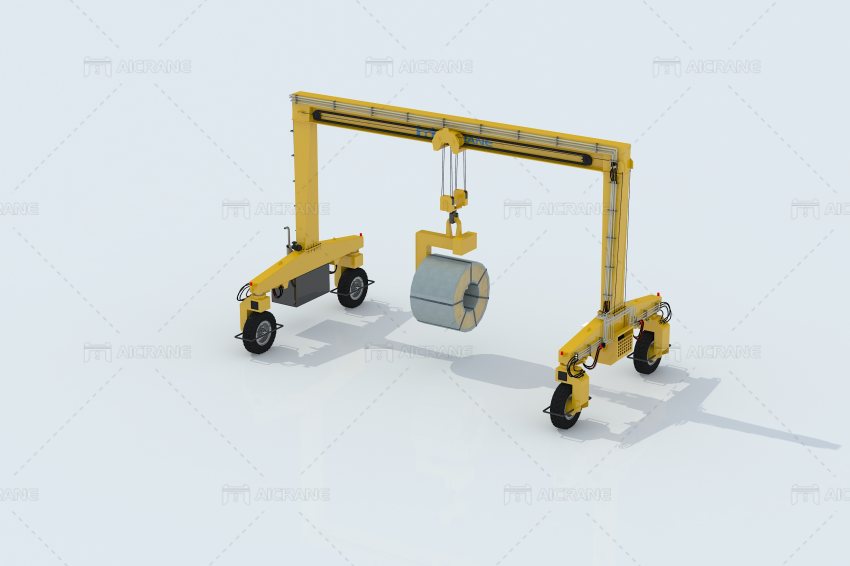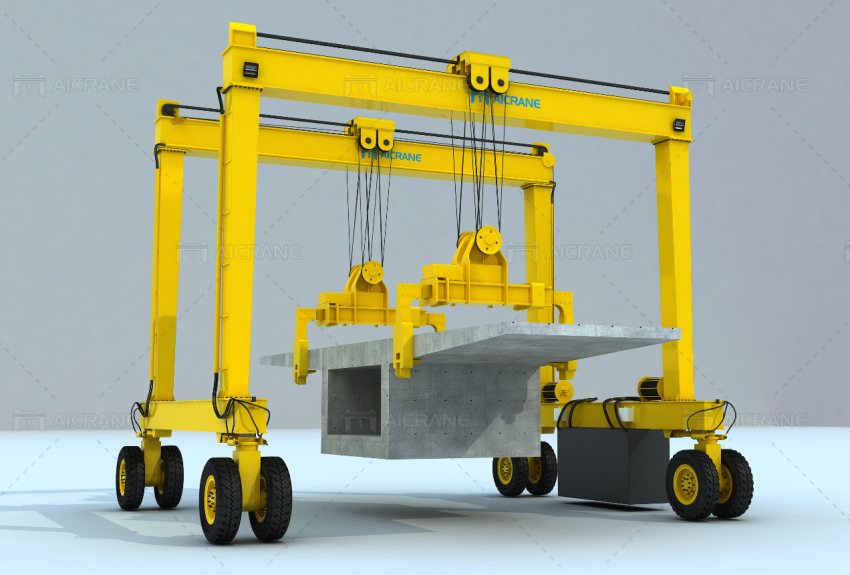Rubber tyre gantry cranes (RTGs) have become indispensable equipment in modern container handling operations. With their mobility, flexibility, and versatility, RTGs offer significant advantages in terms of efficiency and maneuverability. However, it is crucial to ensure that RTGs are used widely and safely to maximize their benefits and prevent accidents. In this article, we will explore the key considerations and best practices for using rubber tyre gantry cranes, enabling businesses to optimize their container handling operations while prioritizing safety.

Understanding the Functionality of RTGs
Before using a rubber tyre gantry crane, it is important to understand its functionality and operational capabilities. RTGs are designed with rubber tyres attached to the wheels, allowing them to move freely on paved surfaces within the working area. The rubber tyre crane can be single girder or double beam crane as needed. They are commonly used in container terminals, stacking and transporting containers between trucks, railcars, and storage yards. RTGs are equipped with a spreader that lifts and moves containers with precision and efficiency. The operator’s cabin provides a clear view of the working area, enabling effective control and maneuvering of the crane.
Ensuring Proper Training and Certification
One of the fundamental aspects of using rubber tyre gantry cranes safely is ensuring that operators receive proper training and certification. It is crucial for operators to be trained on the specific operation of RTGs, including safety protocols, equipment handling, and emergency procedures. Training programs should cover topics such as load capacity limits, correct lifting techniques, and safe navigation within the working area. Regular refresher training sessions are also essential to keep operators up-to-date with the latest safety standards and best practices.
Maintaining a Safe Working Environment
Creating a safe working environment is vital when using rubber tyre gantry crane machines. It is important to establish clear safety protocols and guidelines for all personnel involved in container handling operations. Adequate signage, such as warning signs and designated pedestrian areas, should be in place to prevent unauthorized personnel from entering the crane’s working zone. It is crucial to maintain clear communication channels between the crane operator, ground personnel, and other operators working in the vicinity to ensure a safe and coordinated workflow.

Regular Inspections and Maintenance
Regular inspections and maintenance of rubber tyre gantry cranes are crucial for safe and efficient operations. Before each shift, the crane should undergo a comprehensive inspection to identify any signs of wear, damage, or malfunction. Critical components, such as tyres, brakes, hoisting mechanisms, and electrical systems, should be checked thoroughly. Any identified issues should be promptly addressed by qualified maintenance personnel. Additionally, routine maintenance schedules should be established and followed, including lubrication, parts replacement, and system checks. Regular maintenance not only ensures the crane’s optimal performance but also reduces the risk of accidents due to equipment failure.
Implementing Safety Features and Technologies
To enhance safety, rubber tyre gantry cranes can be equipped with various safety features and technologies. Anti-collision systems, warning alarms, and sensors can help prevent accidents by detecting potential hazards and alerting operators. Overload protection systems are essential for preventing the crane from lifting loads beyond its capacity, ensuring safe operations. Furthermore, integrating automated systems and remote-controlled operations can reduce the need for personnel to work in close proximity to the crane, minimizing risks.
Using rubber tyre gantry cranes widely and safely requires a combination of proper training, maintenance, and adherence to safety protocols. By understanding their functionality, implementing safety measures, and prioritizing regular inspections, businesses can optimize their container handling operations while ensuring the well-being of personnel and preventing accidents. If you are interested in knowing more information about different lifting equipment, you are advised to visit this https://ellsencranes.com/.
